Word Formation Why study word-formation processes? Questions 1)What

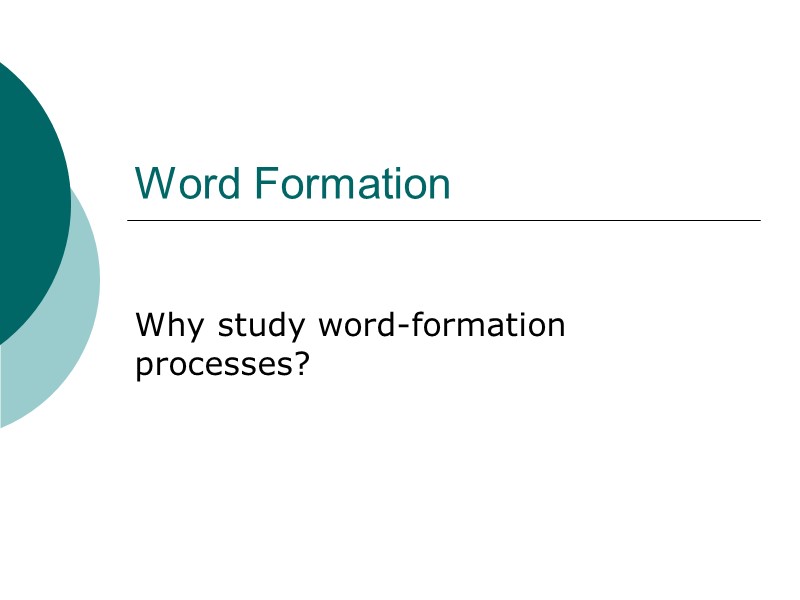
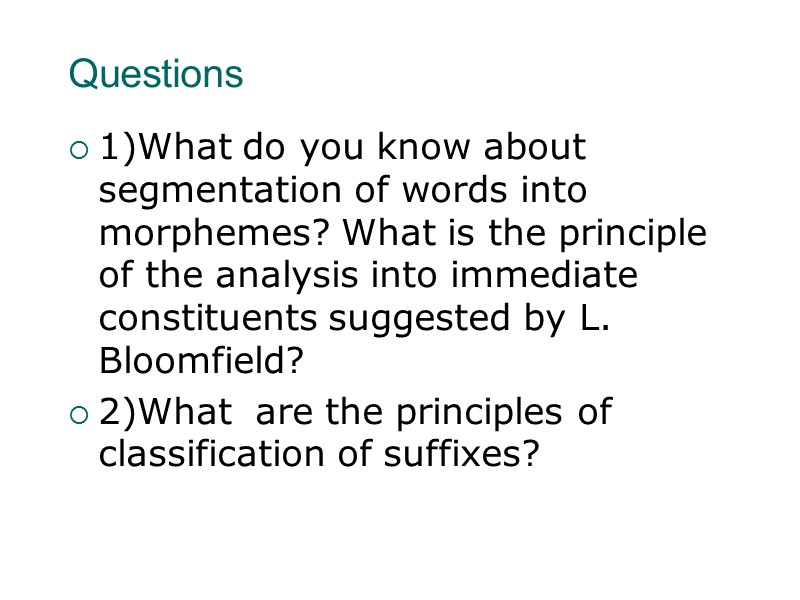
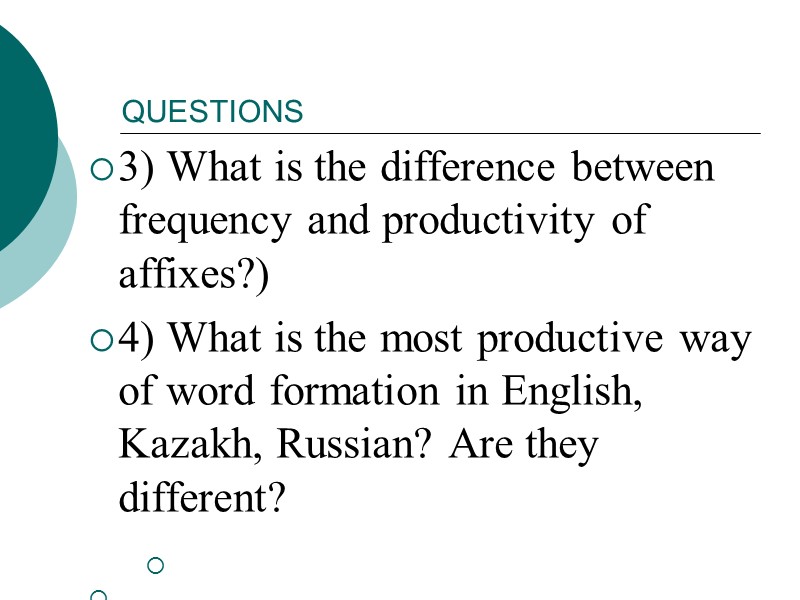
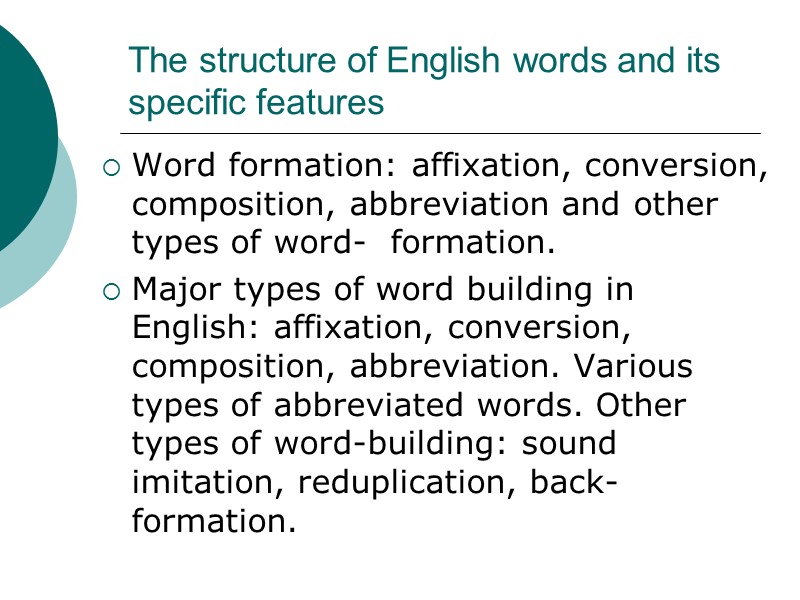
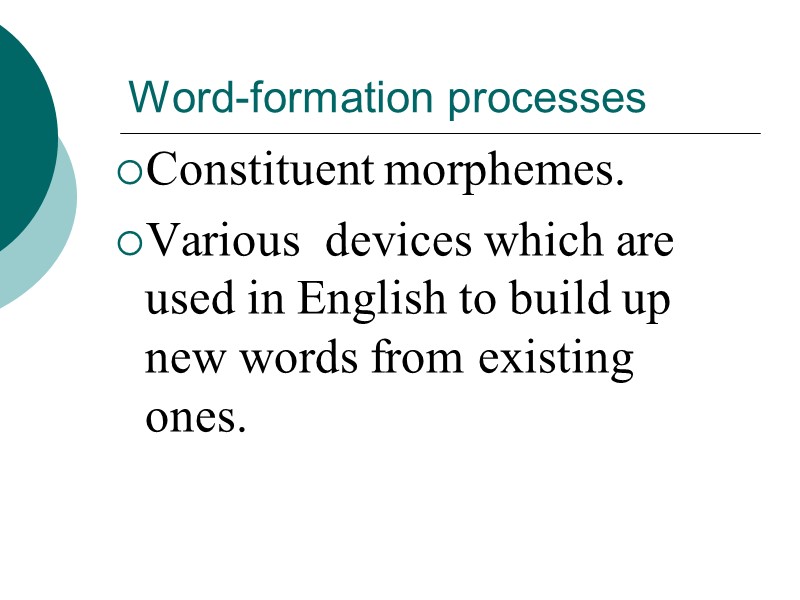
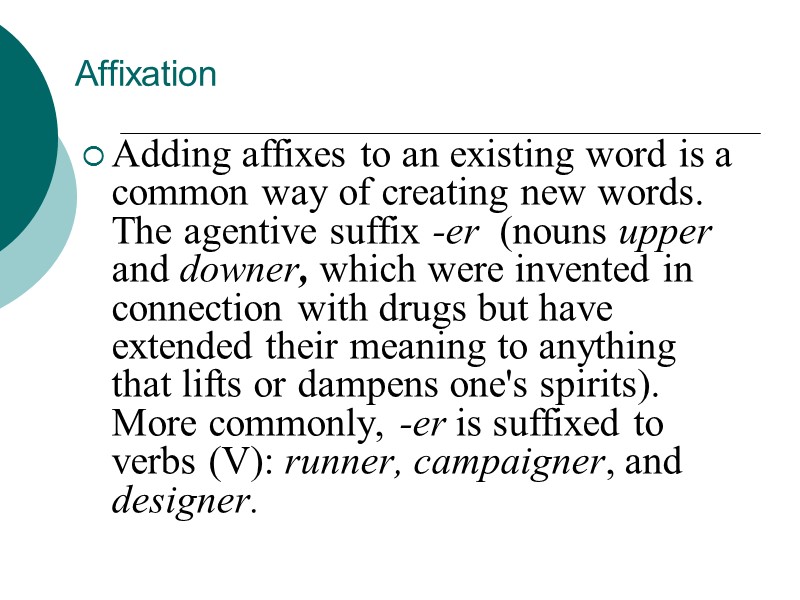
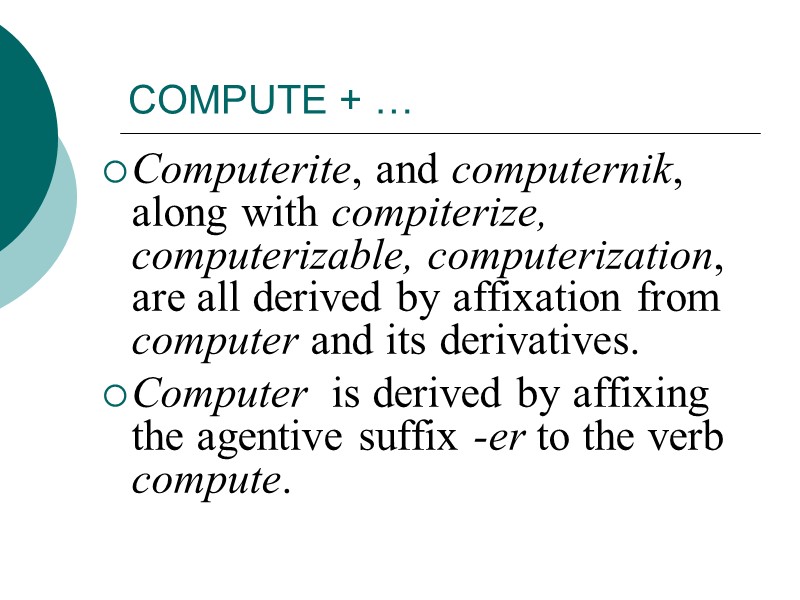
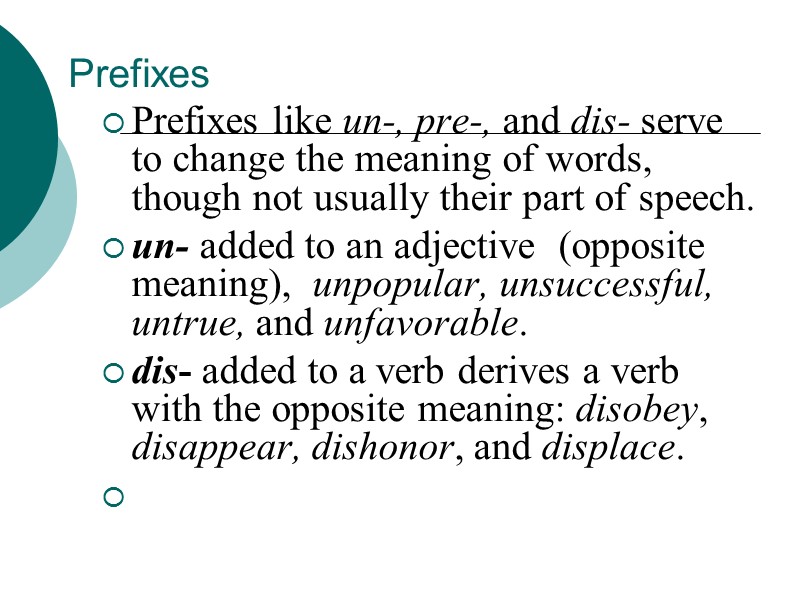
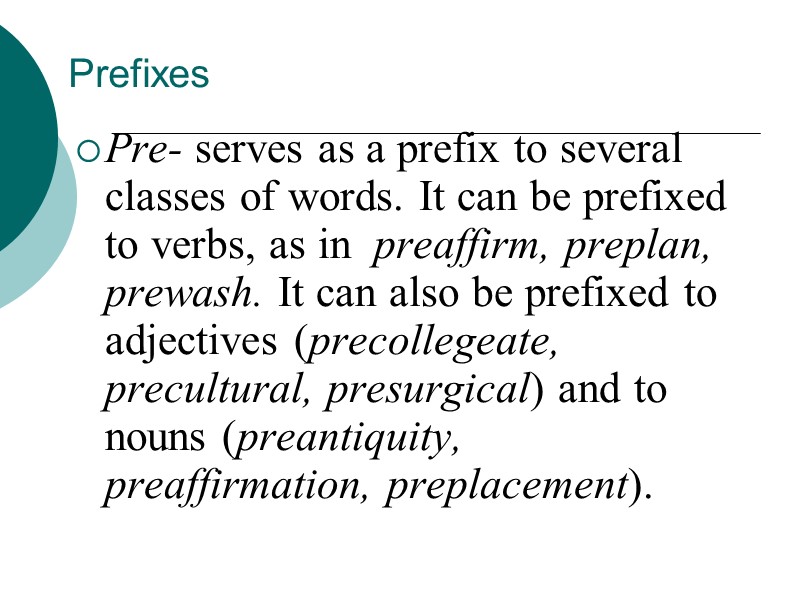
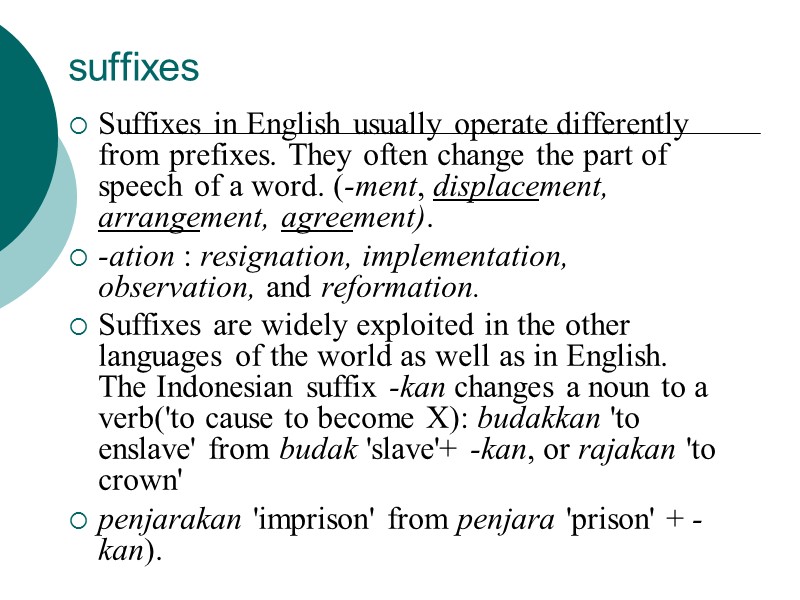
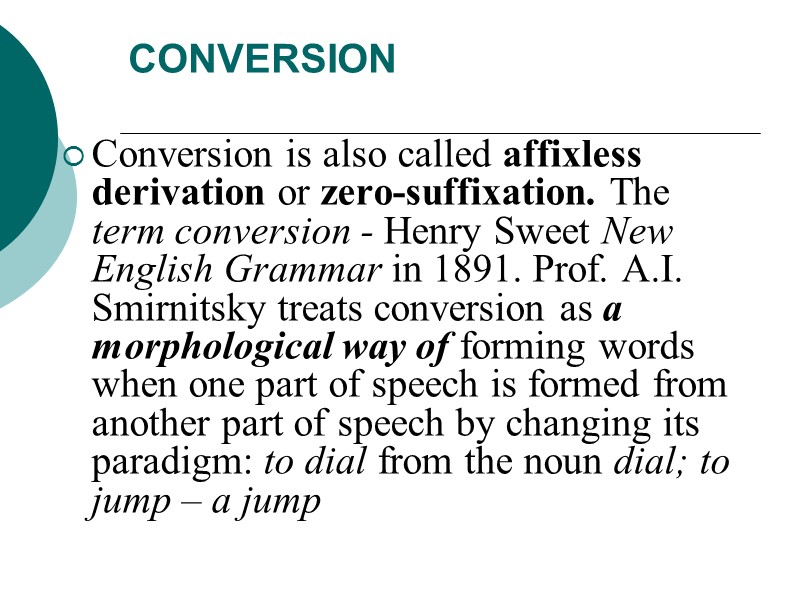
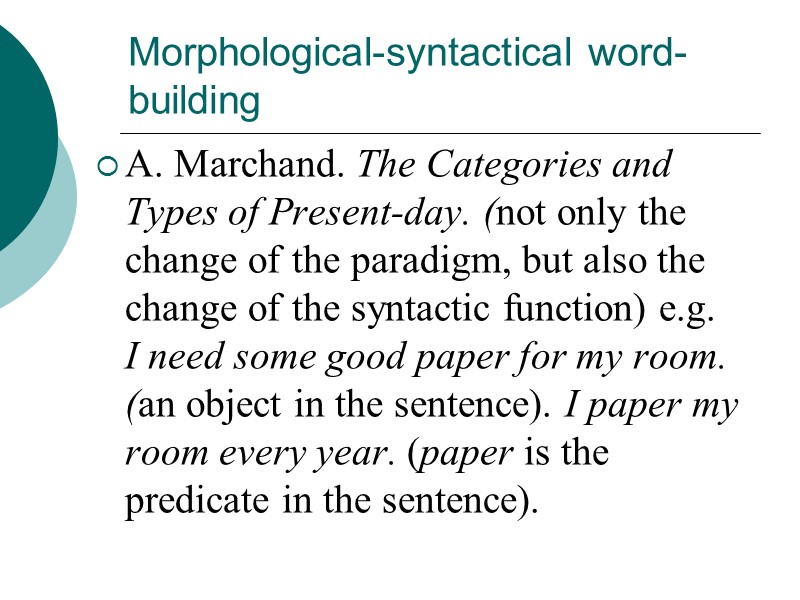
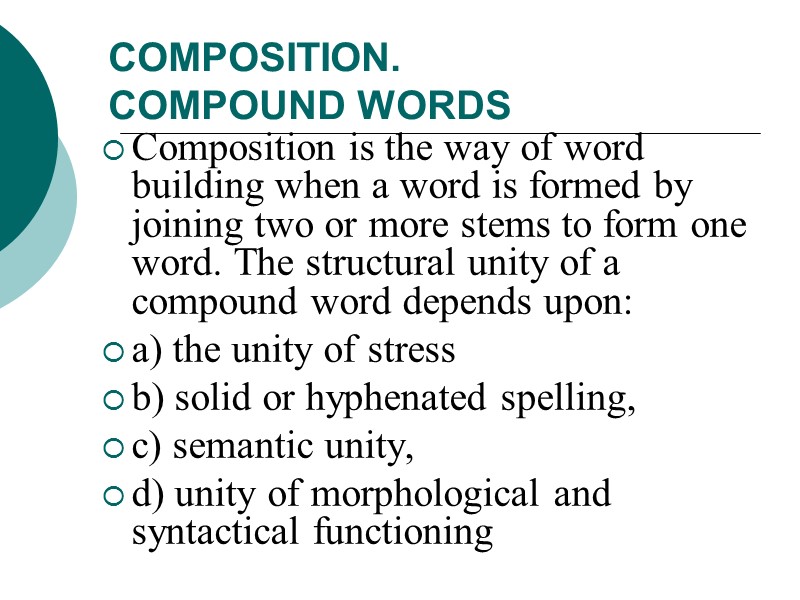
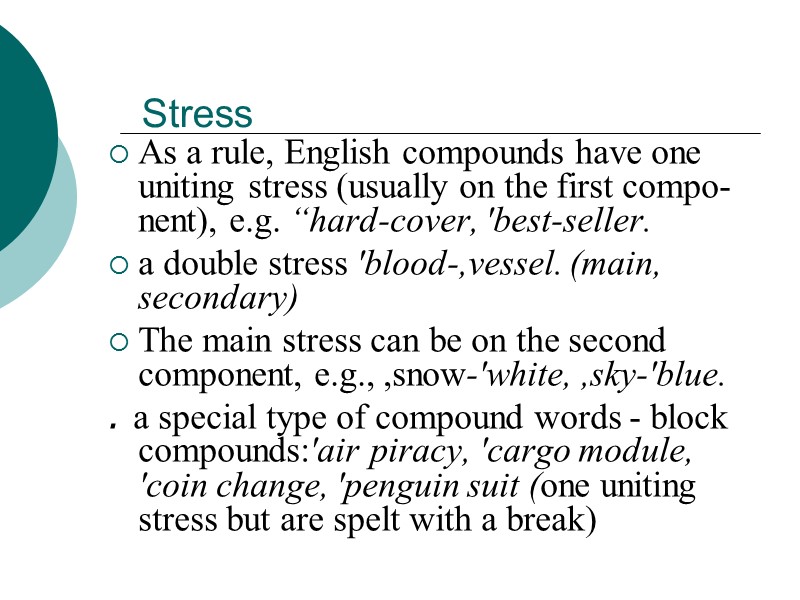
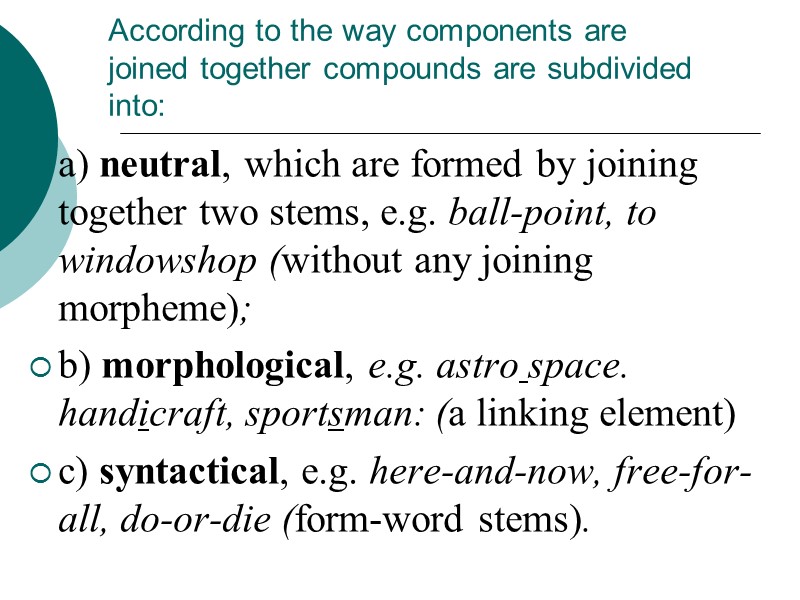
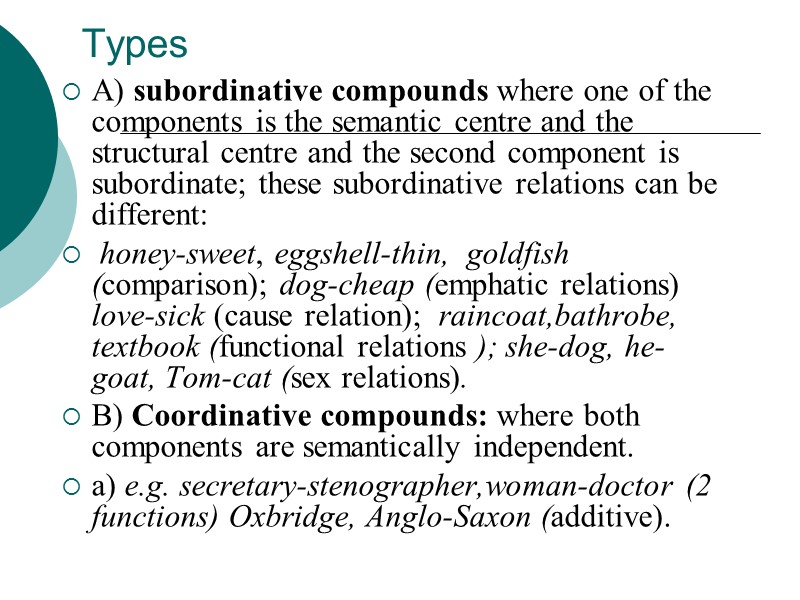
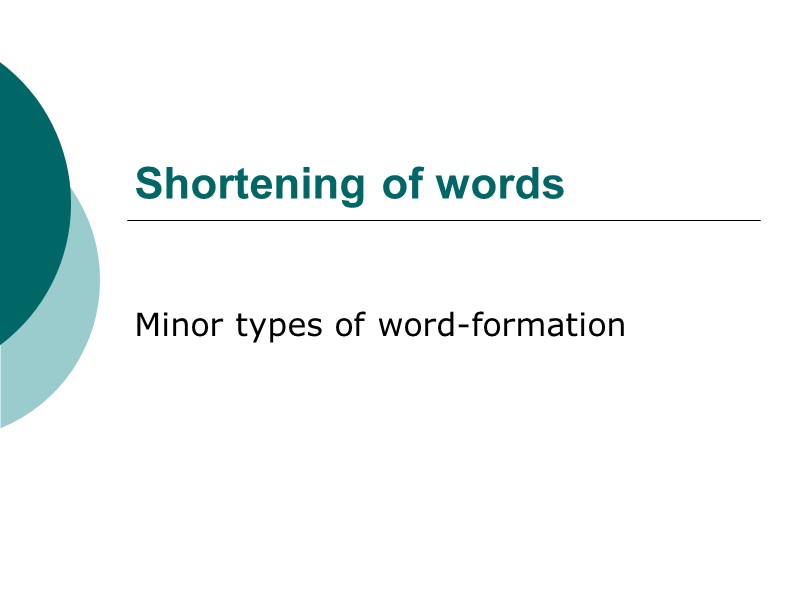
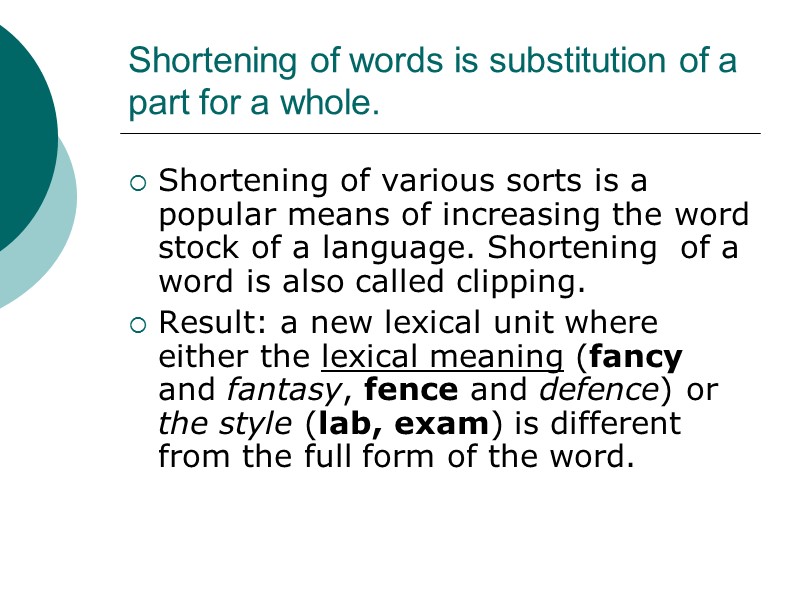
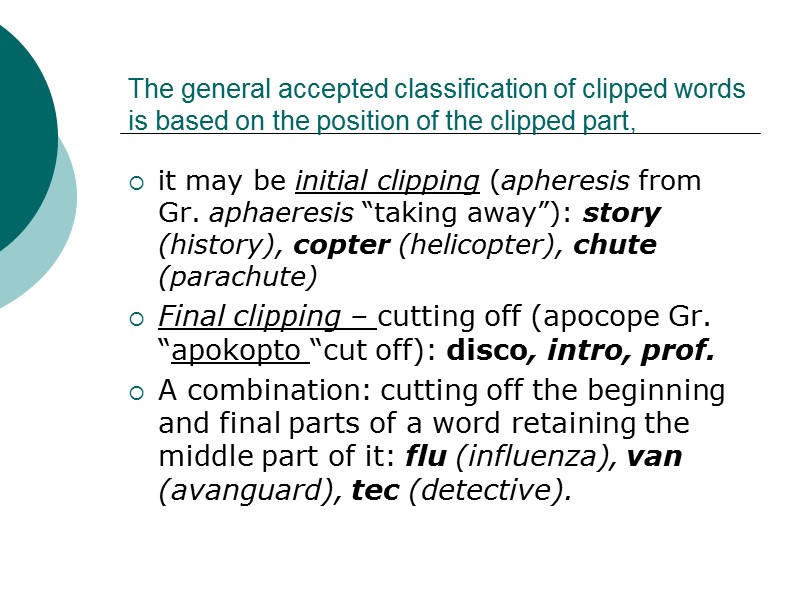
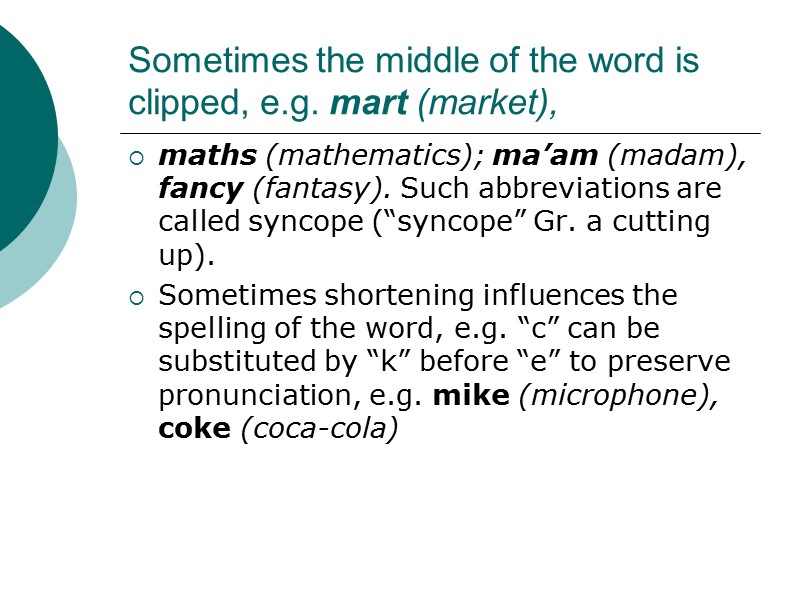
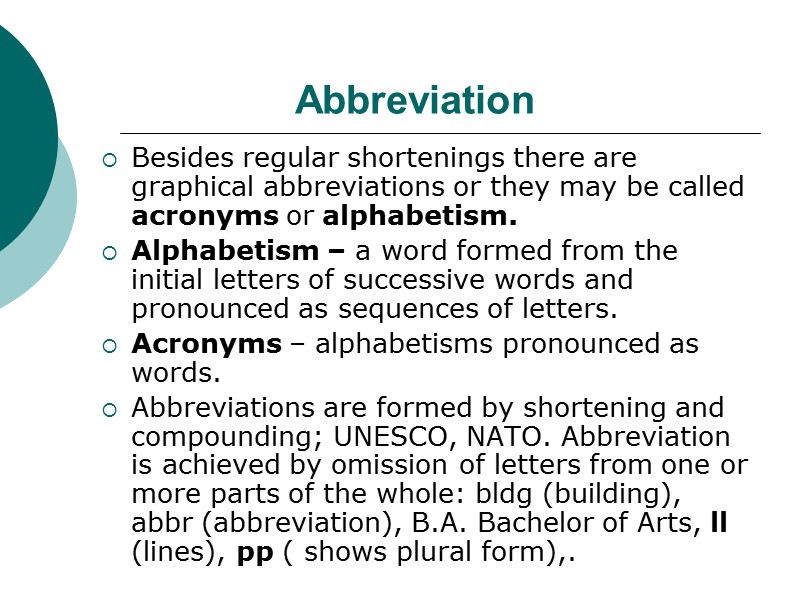
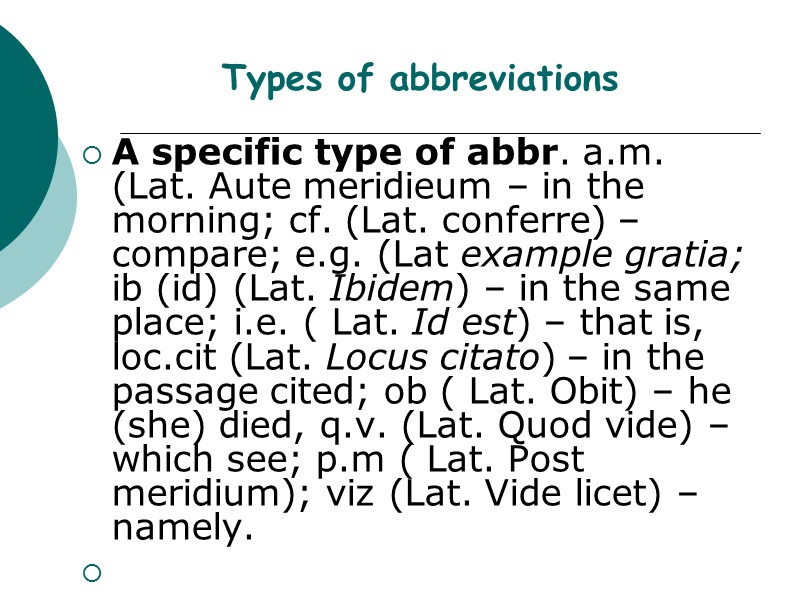
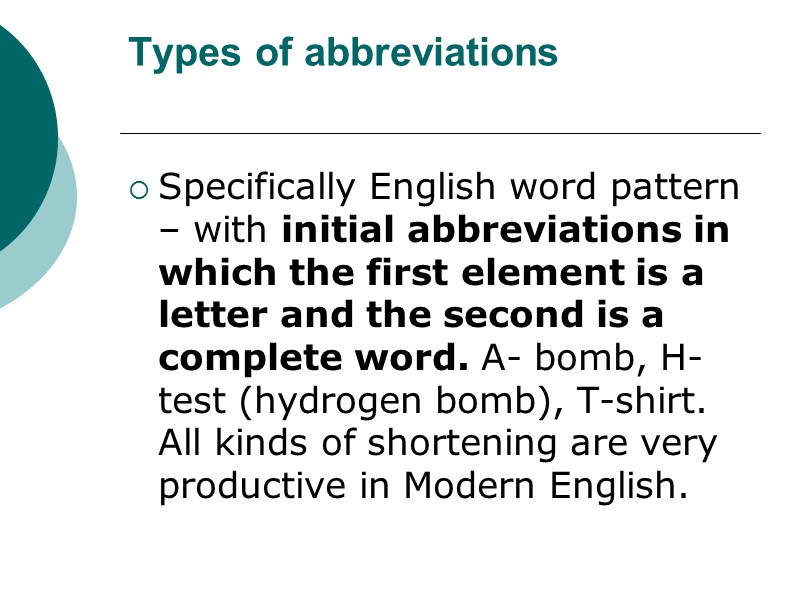
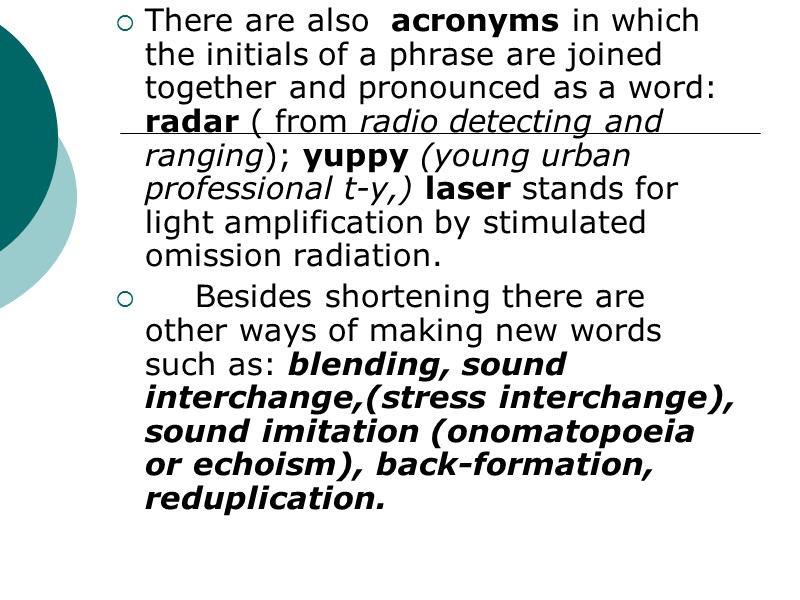
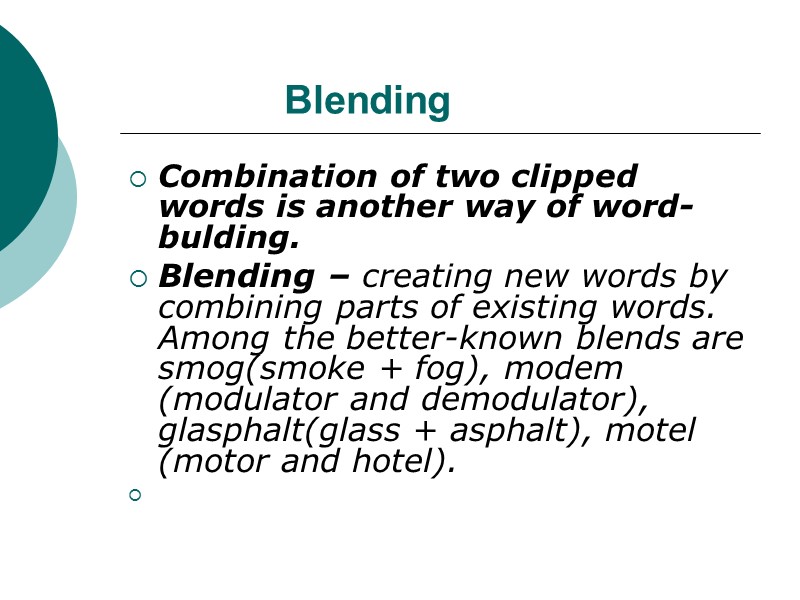


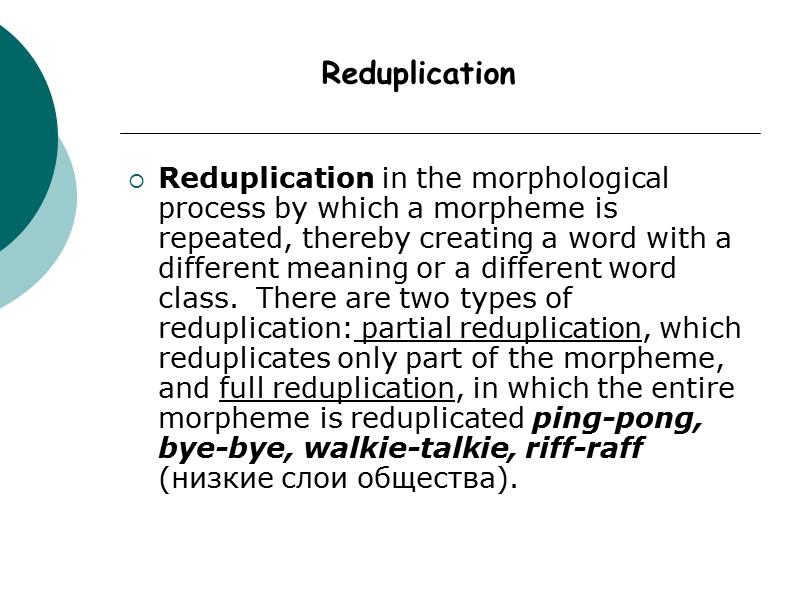
41338-lect.2_word-form..ppt
- Количество слайдов: 28
 Word Formation Why study word-formation processes?
Word Formation Why study word-formation processes?
 Questions 1)What do you know about segmentation of words into morphemes? What is the principle of the analysis into immediate constituents suggested by L. Bloomfield? 2)What are the principles of classification of suffixes?
Questions 1)What do you know about segmentation of words into morphemes? What is the principle of the analysis into immediate constituents suggested by L. Bloomfield? 2)What are the principles of classification of suffixes?
 QUESTIONS 3) What is the difference between frequency and productivity of affixes?) 4) What is the most productive way of word formation in English, Kazakh, Russian? Are they different?
QUESTIONS 3) What is the difference between frequency and productivity of affixes?) 4) What is the most productive way of word formation in English, Kazakh, Russian? Are they different?
 The structure of English words and its specific features Word formation: affixation, conversion, composition, abbreviation and other types of word- formation. Major types of word building in English: affixation, conversion, composition, abbreviation. Various types of abbreviated words. Other types of word-building: sound imitation, reduplication, back-formation.
The structure of English words and its specific features Word formation: affixation, conversion, composition, abbreviation and other types of word- formation. Major types of word building in English: affixation, conversion, composition, abbreviation. Various types of abbreviated words. Other types of word-building: sound imitation, reduplication, back-formation.
 Word-formation processes Constituent morphemes. Various devices which are used in English to build up new words from existing ones.
Word-formation processes Constituent morphemes. Various devices which are used in English to build up new words from existing ones.
 Affixation Adding affixes to an existing word is a common way of creating new words. The agentive suffix -er (nouns upper and downer, which were invented in connection with drugs but have extended their meaning to anything that lifts or dampens one's spirits). More commonly, -er is suffixed to verbs (V): runner, campaigner, and designer.
Affixation Adding affixes to an existing word is a common way of creating new words. The agentive suffix -er (nouns upper and downer, which were invented in connection with drugs but have extended their meaning to anything that lifts or dampens one's spirits). More commonly, -er is suffixed to verbs (V): runner, campaigner, and designer.
 COMPUTE + … Computerite, and computernik, along with compiterize, computerizable, computerization, are all derived by affixation from computer and its derivatives. Computer is derived by affixing the agentive suffix -er to the verb compute.
COMPUTE + … Computerite, and computernik, along with compiterize, computerizable, computerization, are all derived by affixation from computer and its derivatives. Computer is derived by affixing the agentive suffix -er to the verb compute.
 Prefixes Prefixes like un-, pre-, and dis- serve to change the meaning of words, though not usually their part of speech. un- added to an adjective (opposite meaning), unpopular, unsuccessful, untrue, and unfavorable. dis- added to a verb derives a verb with the opposite meaning: disobey, disappear, dishonor, and displace.
Prefixes Prefixes like un-, pre-, and dis- serve to change the meaning of words, though not usually their part of speech. un- added to an adjective (opposite meaning), unpopular, unsuccessful, untrue, and unfavorable. dis- added to a verb derives a verb with the opposite meaning: disobey, disappear, dishonor, and displace.
 Prefixes Pre- serves as a prefix to several classes of words. It can be prefixed to verbs, as in preaffirm, preplan, prewash. It can also be prefixed to adjectives (precollegeate, precultural, presurgical) and to nouns (preantiquity, preaffirmation, preplacement).
Prefixes Pre- serves as a prefix to several classes of words. It can be prefixed to verbs, as in preaffirm, preplan, prewash. It can also be prefixed to adjectives (precollegeate, precultural, presurgical) and to nouns (preantiquity, preaffirmation, preplacement).
 suffixes Suffixes in English usually operate differently from prefixes. They often change the part of speech of a word. (-ment, displacement, arrangement, agreement). -ation : resignation, implementation, observation, and reformation. Suffixes are widely exploited in the other languages of the world as well as in English. The Indonesian suffix -kan changes a noun to a verb('to cause to become X): budakkan 'to enslave' from budak 'slave'+ -kan, or rajakan 'to crown' penjarakan 'imprison' from penjara 'prison' + -kan).
suffixes Suffixes in English usually operate differently from prefixes. They often change the part of speech of a word. (-ment, displacement, arrangement, agreement). -ation : resignation, implementation, observation, and reformation. Suffixes are widely exploited in the other languages of the world as well as in English. The Indonesian suffix -kan changes a noun to a verb('to cause to become X): budakkan 'to enslave' from budak 'slave'+ -kan, or rajakan 'to crown' penjarakan 'imprison' from penjara 'prison' + -kan).
 CONVERSION Conversion is also called affixless derivation or zero-suffixation. The term conversion - Henry Sweet New English Grammar in 1891. Prof. A.I. Smirnitsky treats conversion as a morphological way of forming words when one part of speech is formed from another part of speech by changing its paradigm: to dial from the noun dial; to jump – a jump
CONVERSION Conversion is also called affixless derivation or zero-suffixation. The term conversion - Henry Sweet New English Grammar in 1891. Prof. A.I. Smirnitsky treats conversion as a morphological way of forming words when one part of speech is formed from another part of speech by changing its paradigm: to dial from the noun dial; to jump – a jump
 Morphological-syntactical word-building A. Marchand. The Categories and Types of Present-day. (not only the change of the paradigm, but also the change of the syntactic function) e.g. I need some good paper for my room. (an object in the sentence). I paper my room every year. (paper is the predicate in the sentence).
Morphological-syntactical word-building A. Marchand. The Categories and Types of Present-day. (not only the change of the paradigm, but also the change of the syntactic function) e.g. I need some good paper for my room. (an object in the sentence). I paper my room every year. (paper is the predicate in the sentence).
 COMPOSITION. COMPOUND WORDS Composition is the way of word building when a word is formed by joining two or more stems to form one word. The structural unity of a compound word depends upon: a) the unity of stress b) solid or hyphenated spelling, c) semantic unity, d) unity of morphological and syntactical functioning
COMPOSITION. COMPOUND WORDS Composition is the way of word building when a word is formed by joining two or more stems to form one word. The structural unity of a compound word depends upon: a) the unity of stress b) solid or hyphenated spelling, c) semantic unity, d) unity of morphological and syntactical functioning
 Stress As a rule, English compounds have one uniting stress (usually on the first component), e.g. “hard-cover, 'best-seller. a double stress 'blood-,vessel. (main, secondary) The main stress can be on the second component, e.g., ,snow-'white, ,sky-'blue. . a special type of compound words - block compounds:'air piracy, 'cargo module, 'coin change, 'penguin suit (one uniting stress but are spelt with a break)
Stress As a rule, English compounds have one uniting stress (usually on the first component), e.g. “hard-cover, 'best-seller. a double stress 'blood-,vessel. (main, secondary) The main stress can be on the second component, e.g., ,snow-'white, ,sky-'blue. . a special type of compound words - block compounds:'air piracy, 'cargo module, 'coin change, 'penguin suit (one uniting stress but are spelt with a break)
 According to the way components are joined together compounds are subdivided into: a) neutral, which are formed by joining together two stems, e.g. ball-point, to windowshop (without any joining morpheme); b) morphological, e.g. astro space. handicraft, sportsman: (a linking element) c) syntactical, e.g. here-and-now, free-for-all, do-or-die (form-word stems).
According to the way components are joined together compounds are subdivided into: a) neutral, which are formed by joining together two stems, e.g. ball-point, to windowshop (without any joining morpheme); b) morphological, e.g. astro space. handicraft, sportsman: (a linking element) c) syntactical, e.g. here-and-now, free-for-all, do-or-die (form-word stems).
 Types A) subordinative compounds where one of the components is the semantic centre and the structural centre and the second component is subordinate; these subordinative relations can be different: honey-sweet, eggshell-thin, goldfish (comparison); dog-cheap (emphatic relations) love-sick (cause relation); raincoat,bathrobe, textbook (functional relations ); she-dog, he-goat, Tom-cat (sex relations). B) Coordinative compounds: where both components are semantically independent. a) e.g. secretary-stenographer,woman-doctor (2 functions) Oxbridge, Anglo-Saxon (additive).
Types A) subordinative compounds where one of the components is the semantic centre and the structural centre and the second component is subordinate; these subordinative relations can be different: honey-sweet, eggshell-thin, goldfish (comparison); dog-cheap (emphatic relations) love-sick (cause relation); raincoat,bathrobe, textbook (functional relations ); she-dog, he-goat, Tom-cat (sex relations). B) Coordinative compounds: where both components are semantically independent. a) e.g. secretary-stenographer,woman-doctor (2 functions) Oxbridge, Anglo-Saxon (additive).
 Shortening of words Minor types of word-formation
Shortening of words Minor types of word-formation
 Shortening of words is substitution of a part for a whole. Shortening of various sorts is a popular means of increasing the word stock of a language. Shortening of a word is also called clipping. Result: a new lexical unit where either the lexical meaning (fancy and fantasy, fence and defence) or the style (lab, exam) is different from the full form of the word.
Shortening of words is substitution of a part for a whole. Shortening of various sorts is a popular means of increasing the word stock of a language. Shortening of a word is also called clipping. Result: a new lexical unit where either the lexical meaning (fancy and fantasy, fence and defence) or the style (lab, exam) is different from the full form of the word.
 The general accepted classification of clipped words is based on the position of the clipped part, it may be initial clipping (apheresis from Gr. aphaeresis “taking away”): story (history), copter (helicopter), chute (parachute) Final clipping – cutting off (apocope Gr. “apokopto “cut off): disco, intro, prof. A combination: cutting off the beginning and final parts of a word retaining the middle part of it: flu (influenza), van (avanguard), tec (detective).
The general accepted classification of clipped words is based on the position of the clipped part, it may be initial clipping (apheresis from Gr. aphaeresis “taking away”): story (history), copter (helicopter), chute (parachute) Final clipping – cutting off (apocope Gr. “apokopto “cut off): disco, intro, prof. A combination: cutting off the beginning and final parts of a word retaining the middle part of it: flu (influenza), van (avanguard), tec (detective).
 Sometimes the middle of the word is clipped, e.g. mart (market), maths (mathematics); ma’am (madam), fancy (fantasy). Such abbreviations are called syncope (“syncope” Gr. a cutting up). Sometimes shortening influences the spelling of the word, e.g. “c” can be substituted by “k” before “e” to preserve pronunciation, e.g. mike (microphone), coke (coca-cola)
Sometimes the middle of the word is clipped, e.g. mart (market), maths (mathematics); ma’am (madam), fancy (fantasy). Such abbreviations are called syncope (“syncope” Gr. a cutting up). Sometimes shortening influences the spelling of the word, e.g. “c” can be substituted by “k” before “e” to preserve pronunciation, e.g. mike (microphone), coke (coca-cola)
 Abbreviation Besides regular shortenings there are graphical abbreviations or they may be called acronyms or alphabetism. Alphabetism – a word formed from the initial letters of successive words and pronounced as sequences of letters. Acronyms – alphabetisms pronounced as words. Abbreviations are formed by shortening and compounding; UNESCO, NATO. Abbreviation is achieved by omission of letters from one or more parts of the whole: bldg (building), abbr (abbreviation), B.A. Bachelor of Arts, ll (lines), pp ( shows plural form),.
Abbreviation Besides regular shortenings there are graphical abbreviations or they may be called acronyms or alphabetism. Alphabetism – a word formed from the initial letters of successive words and pronounced as sequences of letters. Acronyms – alphabetisms pronounced as words. Abbreviations are formed by shortening and compounding; UNESCO, NATO. Abbreviation is achieved by omission of letters from one or more parts of the whole: bldg (building), abbr (abbreviation), B.A. Bachelor of Arts, ll (lines), pp ( shows plural form),.
 A specific type of abbr. a.m. (Lat. Aute meridieum – in the morning; cf. (Lat. conferre) – compare; e.g. (Lat example gratia; ib (id) (Lat. Ibidem) – in the same place; i.e. ( Lat. Id est) – that is, loc.cit (Lat. Locus citato) – in the passage cited; ob ( Lat. Obit) – he (she) died, q.v. (Lat. Quod vide) – which see; p.m ( Lat. Post meridium); viz (Lat. Vide licet) – namely. Types of abbreviations
A specific type of abbr. a.m. (Lat. Aute meridieum – in the morning; cf. (Lat. conferre) – compare; e.g. (Lat example gratia; ib (id) (Lat. Ibidem) – in the same place; i.e. ( Lat. Id est) – that is, loc.cit (Lat. Locus citato) – in the passage cited; ob ( Lat. Obit) – he (she) died, q.v. (Lat. Quod vide) – which see; p.m ( Lat. Post meridium); viz (Lat. Vide licet) – namely. Types of abbreviations
 Types of abbreviations Specifically English word pattern – with initial abbreviations in which the first element is a letter and the second is a complete word. A- bomb, H-test (hydrogen bomb), T-shirt. All kinds of shortening are very productive in Modern English.
Types of abbreviations Specifically English word pattern – with initial abbreviations in which the first element is a letter and the second is a complete word. A- bomb, H-test (hydrogen bomb), T-shirt. All kinds of shortening are very productive in Modern English.
 There are also acronyms in which the initials of a phrase are joined together and pronounced as a word: radar ( from radio detecting and ranging); yuppy (young urban professional t-y,) laser stands for light amplification by stimulated omission radiation. Besides shortening there are other ways of making new words such as: blending, sound interchange,(stress interchange), sound imitation (onomatopoeia or echoism), back-formation, reduplication.
There are also acronyms in which the initials of a phrase are joined together and pronounced as a word: radar ( from radio detecting and ranging); yuppy (young urban professional t-y,) laser stands for light amplification by stimulated omission radiation. Besides shortening there are other ways of making new words such as: blending, sound interchange,(stress interchange), sound imitation (onomatopoeia or echoism), back-formation, reduplication.
 Blending Combination of two clipped words is another way of word-bulding. Blending – creating new words by combining parts of existing words. Among the better-known blends are smog(smoke + fog), modem (modulator and demodulator), glasphalt(glass + asphalt), motel (motor and hotel).
Blending Combination of two clipped words is another way of word-bulding. Blending – creating new words by combining parts of existing words. Among the better-known blends are smog(smoke + fog), modem (modulator and demodulator), glasphalt(glass + asphalt), motel (motor and hotel).
 Sound interchange – words or word forms are differentiated due to an alternation in the phonemic composition of the root: foot – feet, strong – strength. Sound imitation – reproduction of a sound associated with it: bubble, flush, splash, gurgle, cock-a-doodle-doo.
Sound interchange – words or word forms are differentiated due to an alternation in the phonemic composition of the root: foot – feet, strong – strength. Sound imitation – reproduction of a sound associated with it: bubble, flush, splash, gurgle, cock-a-doodle-doo.
 Back-formation Back-formation – derivation of new words by subtracting a real or supposed affix from existing words through misinterpretation of their structure (Arnold): computer – compute (a new verb meaning to use a computer), typewrite (typewriter), baby-sit – babysitter, beg – (beggar).
Back-formation Back-formation – derivation of new words by subtracting a real or supposed affix from existing words through misinterpretation of their structure (Arnold): computer – compute (a new verb meaning to use a computer), typewrite (typewriter), baby-sit – babysitter, beg – (beggar).
 Reduplication in the morphological process by which a morpheme is repeated, thereby creating a word with a different meaning or a different word class. There are two types of reduplication: partial reduplication, which reduplicates only part of the morpheme, and full reduplication, in which the entire morpheme is reduplicated ping-pong, bye-bye, walkie-talkie, riff-raff (низкие слои общества). Reduplication
Reduplication in the morphological process by which a morpheme is repeated, thereby creating a word with a different meaning or a different word class. There are two types of reduplication: partial reduplication, which reduplicates only part of the morpheme, and full reduplication, in which the entire morpheme is reduplicated ping-pong, bye-bye, walkie-talkie, riff-raff (низкие слои общества). Reduplication

